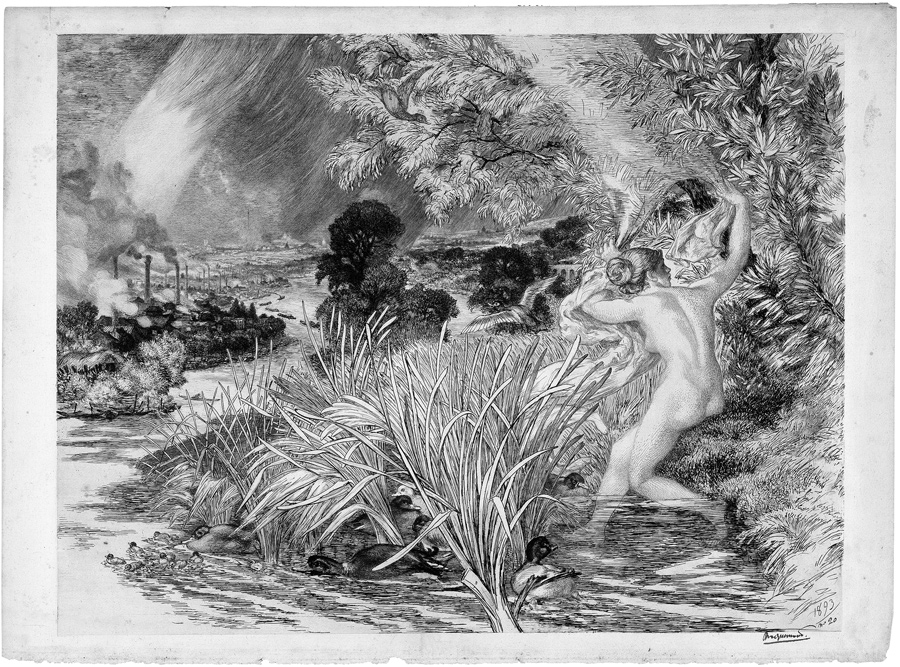Loading the page ...
Félix Bracquemond
(1833–1914, Paris)
L’Arc-en-ciel (The Rainbow). Etching and dry point on firm, laid paper. 40.9 x 53.5 cm. Signed and inscribed with the number 20 in the artist’s own hand. 1892–1897. Delteil 12, Inventaire du Fonds Français 446.
The composition shows the River Seine in the area around Meudon outside the gates of Paris. Sitting on the bank amidst the reeds and lush vegetation sits a naked young woman who is about to enter the water. Arched above her is a majestic rainbow, while a panoramic landscape is visible in the background. The detailed silhouette of Paris can be picked out, as can numerous factory chimneys belching clouds of threatening smoke that symbolise the inexorable advance of industrial society and the destruction of unspoilt nature. In its final state the print is the product of an experimental printing process combining etching and colour lithography. Only a few impressions were taken, all of which have different colour combinations. The present one is a proof of the etching alone, however, published by Eduard Sagot in 1897 in an edition limited to just 25 numbered copies.
The painter Félix Bracquemond had taught himself the art of etching as early as 1849 and quickly attained the same level of mastery as his friend and fellow artist, Charles Meryon. Discovered by Théophile Gautier at the World’s Fair in Paris in 1855, Bracquemond gradually became known in Parisian literary and artistic circles. He associated with Théodore de Banville, Charles Baudelaire, the brothers Edmond and Jules de Goncourt, and Nadar. Bracquemond was the co-founder in 1862 of the Société des Aquafortistes. From the 1860s he was friends with Édouard Manet, taught him how to etch and held a joint exhibition with him in 1863 in the Salon des Refusés. Around 1879, after a longish intermezzo, Bracquemond resumed his interest in the various printmaking techniques and was on friendly terms with Edgar Degas.
Although Bracquemond’s oeuvre is very diverse and he also distinguished himself as a painter, his significance derives principally from his considerable printmaking output. He experimented indefatigably with new printing processes and ranks among the most talented graphic artists that France produced in the second half of the 19th century. His choice of motifs often reveals a penchant for moralising and socio-critical themes that has its roots in a positivist outlook on life and takes account of Baudelaire’s call for modernity. A superb, sharp and contrasting impression with margins. Minor staining, unobtrusive defects in the margins, otherwise in very good condition.
